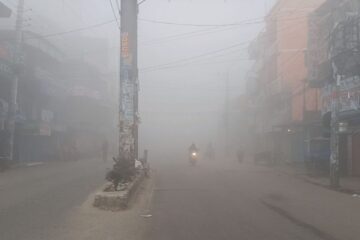Dhaka, the densely populated capital of Bangladesh, continues to gasp for fresh air as the city ranks the world’s third most polluted city.
Dhaka’s air quality index (AQI) score was recorded at 221 at 8:59am on Tuesday, which is considered “very unhealthy”.
India’s Delhi, Pakistan’s Lahore and Uzbekistan’s Tashkent occupied the first, second and fourth spots with AQI scores of 762, 463, and 208, respectively, in the latest list of world cities.
When the AQI value for particle pollution is between 50 and 100, air quality is considered “moderate”, usually sensitive individuals should consider limiting prolonged outdoor exertion, between 101 and 150, air quality is considered “unhealthy for sensitive groups”, between 150 and 200 is “unhealthy”, between 201 and 300 is said to be “very unhealthy”, while a reading of 301+ is considered “hazardous”, posing serious health risks to residents.
The AQI, an index for reporting daily air quality, informs people how clean or polluted the air of a certain city is and what associated health effects might be a concern for them.
The AQI in Bangladesh is based on five pollutants: particulate matter (PM10 and PM2.5), NO2, CO, SO2 and ozone.
Dhaka has long been grappling with air pollution issues.
Its air quality usually turns unhealthy in winter and improves during the monsoon.
As per World Health Organization (WHO), air pollution kills an estimated seven million people worldwide every year, mainly due to increased mortality from stroke, heart disease, chronic obstructive pulmonary disease, lung cancer and acute respiratory infections.



